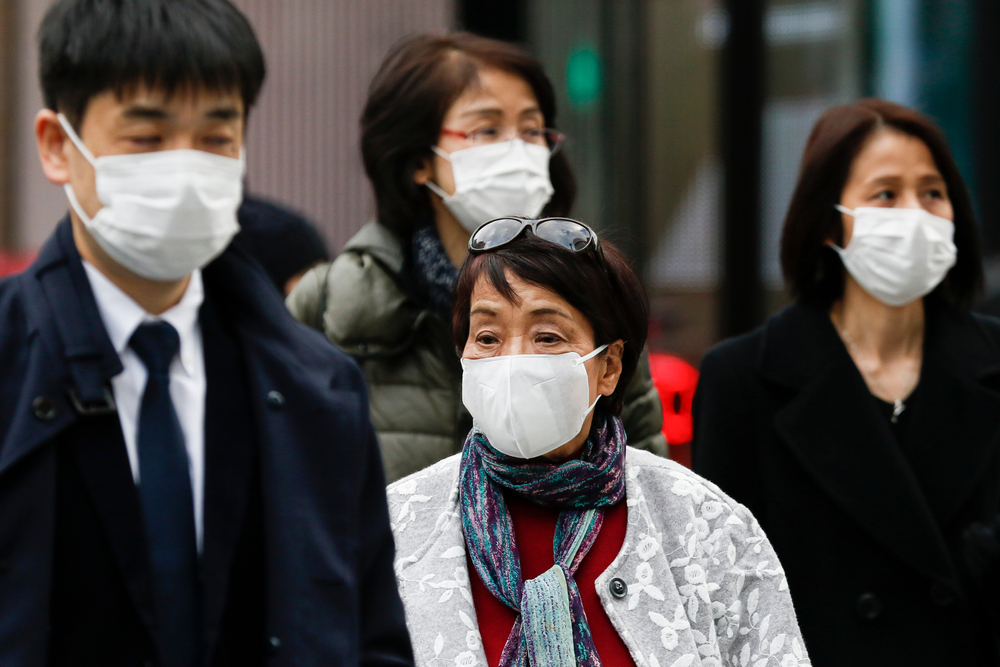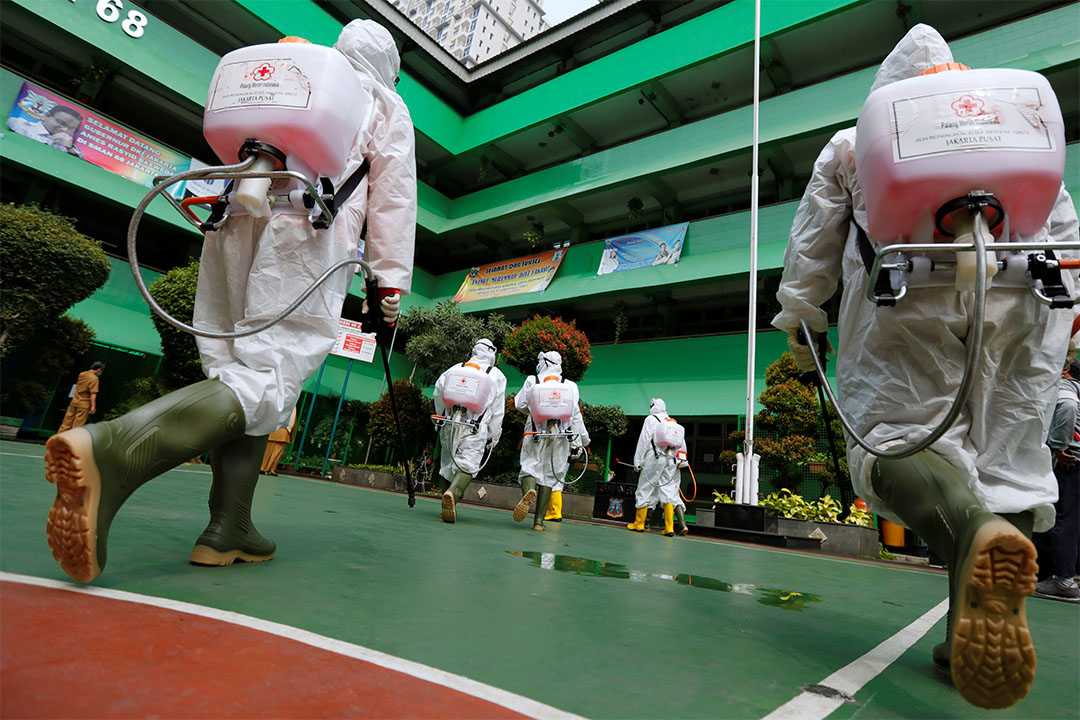
He has become known in Japan as the "80% uncle." Over the past several weeks, Hokkaido University epidemiologist Hiroshi Nishiura has given innumerable TV and newspaper interviews urging the public to reduce social contacts by 80% in order to reverse the suddenly explosive growth of Japan's COVID-19 epidemic. "Cooperate to reduce contacts immediately in a drastic manner," Nishiura keeps saying. He often points to a graph showing results from his modeling indicating that Japan's outbreak can only be contained if people drastically and immediately limit their interactions with others. If they used to have contact with 10 people a day, they have to cut that to two, he says.
Japan's government is hoping people will listen. Confirmed case numbers remain relatively low but are rising at an alarming rate. On 15 March, Japan had an official cumulative total of 780 cases; as of 19 April, that number had soared to over 10,700, 3000 of them in Tokyo. "Tokyo and other big cities are already entering an explosive phase and other areas in Japan are also following that path," says Kenji Shibuya, a global health scholar at King's College London. He and others blame a containment strategy that focused on known infection clusters but limited access to testing, allowing individual cases to escape surveillance.
The national government has been slow to push for widespread social distancing. It closed schools for the month of March and recommended that people avoid crowds. But workplaces, shops and restaurants stayed open. Finally, in response to the rapid rise in cases, Japanese Prime Minister Shinzo Abe declared a state of emergency in seven prefectures on 7 April, then extended it to the whole country on 16 April. That gives prefectural governors authority to close schools and other public facilities. But they have no legal power to order people to stay home or businesses to close. The emergency declaration "is too late," Shibuya says.
In late February, when the outbreak was still small, the health ministry followed what Shibuya calls an "old-fashioned" approach to controlling an epidemic, because it did not involve widespread testing. The ministry established a "cluster response section," a team of contact tracers and data analysts that tracked down and tested those linked to infected groups. The section even produced maps showing the locations of clusters around the country to keep the public aware what it was uncovering.
That strategy worked early on, but Shibuya says he became increasingly worried that community spread in the big cities was being missed because of their high population densities, the challenges of contact tracing, and transmission routes that don't involve clusters. For example, the virus can survive on surfaces and be picked up by an individual without direct contact with an infected person. Nishiura, who serves on an expert panel advising the health ministry on the cluster strategy, agrees that it was "not very successful in urban locations."
Meanwhile, testing was limited and likely missed many mild infections. "We cannot know the true number of infected patients," says Masahiro Kami, a physician who heads the Tokyo-based Medical Governance Research Institute. In order to qualify for a test, a patient has to have a temperature of at least 37.5 degrees C, or difficulty breathing for at least four days, or two days for the elderly. Citizens who feel ill are asked to stay home and monitor their health and body temperature for several days and only request a test if symptoms persist or grow worse. (The intent was to keep those with ordinary cold or flu symptoms from overwhelming test centers.) The Japan Medical Association has also reported that many physicians have had difficulty getting their patients tested. The bottom line is that Japan has conducted roughly 1500 tests per million inhabitants, less than 15% the number in South Korea.
Even hospitals had trouble getting suspected COVID patients tested, Kami says. Now, 20% of new cases reported in Tokyo are linked to hospital-acquired infections among patients and staff.
Testing capacity is now being expanded. The government hopes to be able to conduct 20,000 tests per day by the end of the month. And so far, calls by Nishiura and others for voluntary compliance with the emergency measures seems to be having an impact. Most movie theaters, museums and department stores have shut their doors. The Tokyo Metropolitan Government reports that morning rush hour ridership on city subway lines last week was down 60% from pre-crisis levels. Many restaurants and bars have closed or are open for take-out only. But others continue business as usual.
Even if the number of new cases is driven down dramatically, "we have to be prepared for both good and bad scenarios," Kobe University infectious disease specialist Kentaro Iwata said Monday during an online press briefing sponsored by the Foreign Correspondents' Club of Japan. (Iwata became famous two months ago after posting a dramatic video about the "chaotic" procedures aboard the Diamond Princess, a cruise ship quarantined in Yokohama in February because it had COVID-19 cases on board.)
Nishiura, for one, worries that what's been done so far isn't enough. That's why the "80% uncle" will keep taking his message to the public.
COVID-19 Update: The connection between local and global issues–the Pulitzer Center's long standing mantra–has, sadly, never been more evident. We are uniquely positioned to serve the journalists, news media organizations, schools, and universities we partner with by continuing to advance our core mission: enabling great journalism and education about underreported and systemic issues that resonate now–and continue to have relevance in times ahead. We believe that this is a moment for decisive action. Learn more about the steps we are taking.










